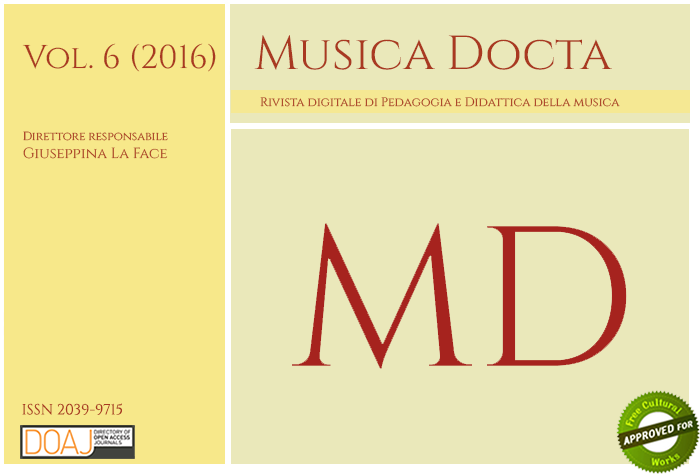Teaching Medieval Music Today: New Approaches to Paleography and Music History
DOI:
https://doi.org/10.6092/issn.2039-9715/6569Parole chiave:
Medieval music, Pedagogy, Guido of Arezzo, Music history teachingAbstract
Besides a tendency to abstractness, inherent in the technical nature of the subject itself, a common problem in the teaching of medieval music history is how to awaken the interest of learners in matters that are so far back in time as to have nothing in common with modern sensibility. Referring to the introduction of the staff by Guido of Arezzo in the 11th century, the article tries to explain how, by aptly combining chronologically organized descriptions of facts with a basic study of documents (that is, by adopting the rudiments of the research methods used by expert historians), students can be encouraged to reconstruct history with a strict method. This approach also sheds light on the reasons why men and women of the past adopted certain innovations or kept certain traditions alive.Downloads
Pubblicato
2016-12-30
Come citare
Ruini, C. (2016). Teaching Medieval Music Today: New Approaches to Paleography and Music History. Musica Docta, 6(1), 69–76. https://doi.org/10.6092/issn.2039-9715/6569
Fascicolo
Sezione
Articoli
Licenza
Copyright (c) 2016 Cesarino Ruini
I diritti d'autore di tutti i testi nella rivista appartengono ai rispettivi autori senza restrizioni.
La rivista è rilasciata sotto una licenza Creative Commons Attribuzione Condividi allo stesso modo 4.0 Internazionale (codice legale completo).
Vedere inoltre la nostra Open Access Policy.
Metadati
Tutti i metadati dei materiali pubblicati sono rilasciati in pubblico dominio e possono essere utilizzati da ognuno per qualsiasi scopo. Questi includono i riferimenti bibliografici.
I metadati – riferimenti bibliografici inclusi – possono essere riutilizzati in qualsiasi formato senza ulteriori autorizzazioni, incluso per scopo di lucro. Chiediamo cortesemente agli utenti di includere un collegamento ai metadati originali.






